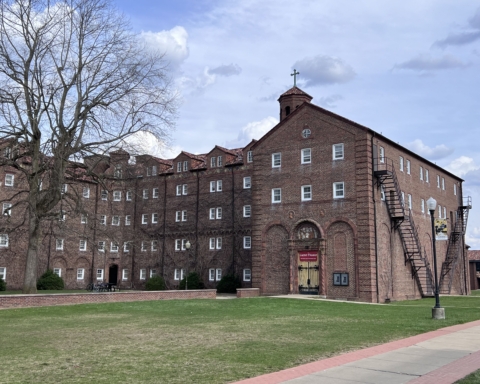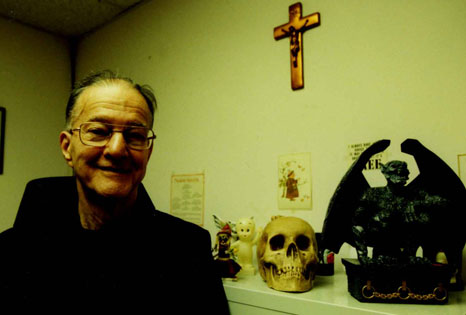By Hunter Samuelson
Staff Writer
The Regina A. Quick Center for the Arts hosted artist Thomas Paquette to display his exhibition, “On Nature’s Terms: Painting by Thomas Paquette Commemorating the 50th Anniversary of the Wilderness Act.” On Monday, Paquette gave a gallery talk on the appreciation of nature.
It’s been 50 years since the signing of the Wilderness Act of 1964, the law that protects the wildest remaining lands in the United States, or, as Paquette called it, “the most poetic of United States legislation.”
Paquette creates landscape art to show that nature is a lifesaving oasis for all kinds of plants and animals. He defines wilderness as a place undisturbed by men but believes the balance of nature and culture is shifting.
During his speech, Paquette emphasized the importance of aesthetics, or a set of principles concerning nature and the appreciation of beauty, especially in art.
“Aesthetics saves us profoundly,” Paquette said in his talk.
Paquette believes that aesthetic senses help students better understand the complexity of natural systems.
“Once you lose something, it takes an eon for it to come back, so we might as well try and keep it,” Paquette said.
Paquette also spoke of the importance of students to appreciate the beauty of nature.
“The process of nature teaches us the concept of going forward without making errors. It’d be a really sad world without any original nature,” Paquette said.
As a child, Paquette often traveled around the country with his parents and nine siblings.
“Coming back home was a surreal experience, and I experienced culture shock as a 6 year old,” Paquette said.
Paquette learned early in his life just how good of a teacher nature was. Using the money he made from working a paper route, he bought an Instamatic camera and began snapping photos outside of the car window during his childhood travels.
“As we were traveling from my car at 60 miles an hour, the exposure time was so slow, I would get these big streaks of green and I realized I had this excitement about what I was seeing,” Paquette said.
Paquette recalls arriving home and seeing that his photos didn’t relate to the actual landscape he saw outside his window.
“We’ve all had that experience where you see your photographs from travel and it just doesn’t really capture the scene,” he said. “I felt that very early because I knew something was missing, and that’s where art comes in.”
Realizing art creates visuals that go beyond a simple streak of green, Paquette felt obligated to create landscape art to show there is more outside of a car window than a streak of green — he wanted to capture the green streak and turn it into something to be appreciated — an aesthetic message.
Paquette’s journey to becoming an artist is relatable to students who have only a vague idea of what they want in their futures.
At 18, Paquette began rethinking art as a career. After discovering a railroad atlas in the library which became “his bible,” he traveled around the country, hopping freight trains and hitchhiking, trying to relive the months that his parents took him out on the road as a child. A month and a half in, Paquette made it out to California.
He recalls trying to capture a piece of granite on his small sketchbook, and when he decided that he couldn’t do it successfully, it was then that he realized there was no way he could become an artist.
“For years, I tried to forget about that experience, so I traveled around and worked as a welder,” Paquette said.
He remembers traveling in a boxcar, but his travels as a welder made it even more difficult to forget about art.
Eventually, Paquette returned to school to become a park ranger, but this required communication courses, and he realized the only courses he would excel in were art courses. Finally realizing that he had to merge passion with career, Paquette eventually got his masters in fine arts at the University of Illinois.
Although Paquette traveled around the globe, today his inspiration comes from the natural world surrounding him in the Allegheny National Forest.
When giving advice to young artists, Paquette said, “Some people need challenges. If painting was important to me, I needed to try hard to do it.”
The “On Nature’s Terms” exhibition will run through Nov. 2, and the Beltz Gallery is located on the second floor of the Regina A. Quick Center. Paquette’s pieces include “Border Aerie,” “Rising Tide of the Fog, and “Equilibrium”.
Samuelhn14@bonaventure.edu







